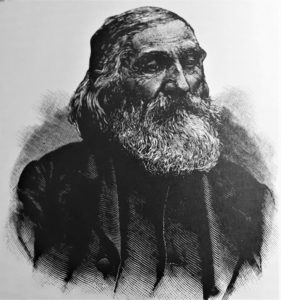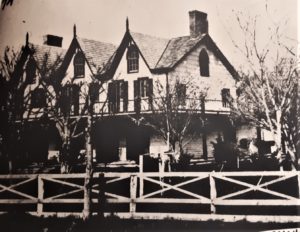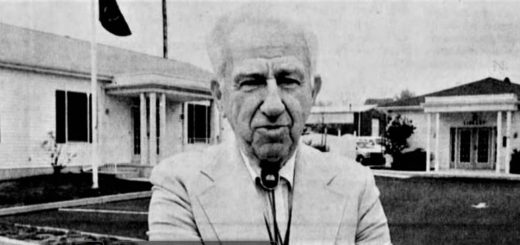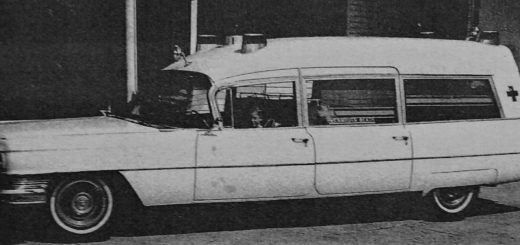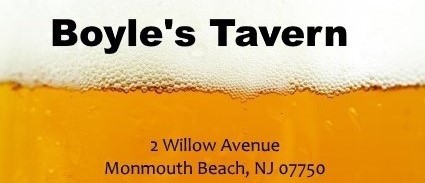The Doctor’s Beach Towns …
He owned Monmouth Beach & Sea Bright
I made a satisfying publishing career on writing for and about physicians. So it was very pleasing to find that a medical doctor once played a meaningful role in our local history.
In October 1865 — six months after the Civil War ended — Dr. Arthur V. Conover purchased all of what is now Monmouth Beach and most of Sea Bright for $30,000. That $5-per-acre acquisition opened the way for development of both seashore communities. Some 5 years later Dr. Conover would pair Gilded Age tycoon connections with pristine beachfront property to double his investment.
He acquired the land from the heirs of Major Henry Wardell, the great-great grandson of the area’s first settler, Eliakim Wardell, who got it from the Lenepe Indians for about $50 in goods in 1668. A physician from Freehold, Dr. Conover called his new property the “Sea-View Farm.” It had been known as “Wardell’s Beach” since the first area maps were drawn. Sea Bright was known as “Nauvoo.”
Born in Manalapan, NJ on January 30, 1809, Conover was just 21 when he married Eliza Ann Vanderveer. The couple had four children: Ellen, David, William and Jacob (the latter two were also physicians). Dr. Conover studied medicine at what was to become the Columbia University College of Physicians and Surgeons under Dr. Valentine Mott, a renowned surgeon of his day. Dr. Conover practiced medicine for many years in Freehold before coming to Wardell’s shore property.
By June 1869, Conover had sold the Sea Bright portion to Mifflin Paul (about 72 acres). The unofficial founder of Sea Bright, Paul paid $5,360 to buy much of the area which he also plotted out. At the time not a single house existed. A true wheeler-dealer, Paul started the railroad in town, built the first bridge and the Long Branch-Seabright Turnpike (essentially Ocean Avenue). Paul also set up the original the Octagon Hotel and Peninsula House Hotel, before his death in April 1890.
“The major fortunes in America have been in land.”
—John D. Rockefeller
According to the book Album of Long Branch: A Series of Photographic Views with Letter-Press Sketches by J.H. Schenck (1868), Dr. Convover also constructed several out-buildings as well as a new railroad depot in Monmouth Beach, just 250 yards from his house. He also did business with the local fishing industry, selling land for pound boaters to get started in Galilee.
The house image below, built by Benjamin Wardell in 1788, was where Dr. Conover worked out a deal with three elite representatives of the Monmouth Beach Association (John Torrey, Cortland Parker, and Anthony Keasbey) to sell his holdings for $60,000 in early 1871. This group of wealthy East Coast professionals is largely credited with developing the borough layout known today. It would have influence in town through the 1930s.
The first structure ever built in Monmouth Beach by Eliakim Wardell in the early 1670s is called a “farmhouse” in the Schenck book. That structure was rebuilt by Dr. Conover into the house below and still was not the final look at that spot. Later it would be replaced by a massive resort hotel. It all flamed out in 1929. The house below is unknown to me. I welcome any input.
Something of an entrepreneur himself, Dr. Conover later owned the Metropolitan Hotel in bordering Long Branch. The oceanfront resort spot was lost in a April 1876 fire (later the Brighton Hotel was built on the location). Dr. Conover was also a member of the NJ state legislature in 1836 and served as the Monmouth County Surrogate from 1844 to 1858. He died in Freehold in June 1896.
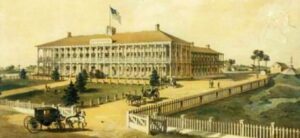
Metropolitan Hotel along the oceanfront in Long Branch, 1870s. Sam and Joe Cooper first opened the hotel in 1854. Dr. Arthur Conover — using his Monmouth Beach property profits — took ownership of the 12-acre resort in 1874. The hotel, which could accommodate up to 600 guests, was at Cooper and Ocean Avenues. The doctor didn’t have long to enjoy his investment. It all burned in a roaring April 1876 fire.
